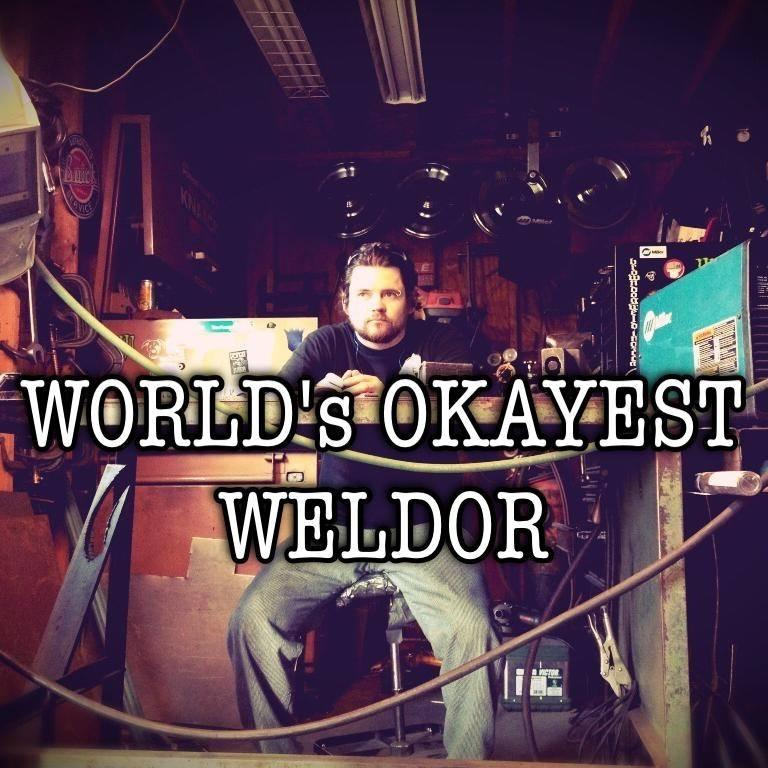Owner, Brown Dog Welding
- FMA
- The Fabricator
- FABTECH
- Canadian Metalworking
Categories
- Additive Manufacturing
- Aluminum Welding
- Arc Welding
- Assembly and Joining
- Automation and Robotics
- Bending and Forming
- Consumables
- Cutting and Weld Prep
- Electric Vehicles
- En Español
- Finishing
- Hydroforming
- Laser Cutting
- Laser Welding
- Machining
- Manufacturing Software
- Materials Handling
- Metals/Materials
- Oxyfuel Cutting
- Plasma Cutting
- Power Tools
- Punching and Other Holemaking
- Roll Forming
- Safety
- Sawing
- Shearing
- Shop Management
- Testing and Measuring
- Tube and Pipe Fabrication
- Tube and Pipe Production
- Waterjet Cutting
Industry Directory
Webcasts
Podcasts
FAB 40
Advertise
Subscribe
Account Login
Search
There is always more to learn about welding
- By Josh Welton
- March 15, 2016
“There is nothing noble in being superior to your fellow man; true nobility is being superior to your former self.” –Ernest Hemingway
I’ve told stories before about one of the early welding mentors in my life, the late Tom Soley. Through actions, not just words, he taught me that no matter how much experience you have, there is always room to learn. Tradespeople of various backgrounds and skill levels passed through his classes, and despite his 40 years in the welding trade, if they had a new idea or technique, he was all ears. If it was not sound, he’d explain why and show them a better method. If the trick had legs, he tried it out and added it to his bag of tools.
Humility and welding do not typically walk hand in hand; few I’ve known have toed the line as Tom did. Like athletes, or fighter pilots, or rock stars, welders often have a certain swagger. To be a good welder you need to have a talent and vision that not all are born with, terrific hand-eye coordination, and experience that is not easily gained.
John Kacir, my boss slash co-teacher at Macomb Community College and one of the first (and steadiest) people I ever saw weld, once told me that almost every good welder he met had at least a certain amount of “arrogance.” But to be great, you have to understand your limitations, and everyone has limitations.
The welding trade is too vast for anyone to know everything. It’s easy to say you’re willing to learn. It’s harder to put into practice.
I’m in my second semester of teaching at Macomb, and sharing the responsibilities with John and his son Scott have reaffirmed that my 14 years of starting arcs are a drop in the bucket.
Scott is in his mid-30s, like me, but he’s been welding since he could walk (about a 20-year head start). If there’s a book about welding, he owns it and has read it a couple of times. Merge that with the hand skills that come from years of being a shop rat, and he’s a formidable talent.
Meanwhile, John is possibly the best welding theory instructor out there. Much of his classes’ content is information you just won’t learn anywhere else. He combines decades of hands-on experience with an innate ability to communicate what is typically dry and boring “book” knowledge in a manner that holds the student’s attention and, therefore, translates well when put into practice.
The last few weeks I’ve been down in Lima, Ohio, to work on Mil-Spec certifications for my job at General Dynamics Land Systems. Gary Bashore is the instructor there, and he’s the man behind more than 180 different welding procedures that GDLS has used over the last 30-plus years.
I’ve been around a lot of really talented welders in my years at Chrysler, Macomb, and General Dynamics, and Gary might be the most consistent I’ve seen. Coming down from GD’s prototype shop, I think we’re expected to be at a certain level. Because of this expectation, Gary’s method of instruction was “watch me do it, and then you do it.” But if I had any questions, he was willing to talk through them and explain the why and the how as well.
Anytime I forget my place in the grand scheme of things, life tends to send me a reminder. Or two, or three. I’m proud of my abilities and what I’ve been able to accomplish since first running a bead as a young millwright apprentice in Detroit. But just the last few months of being a teacher and a student, occasionally both at the same time, have put my abilities and expertise into perspective. As Socrates would say “true knowledge exists in knowing that you know nothing.”
It’s easy to say. Hard to admit. But doing so is the only way to grow.
All images courtesy of Brown Dog Welding.
subscribe now

The Fabricator is North America's leading magazine for the metal forming and fabricating industry. The magazine delivers the news, technical articles, and case histories that enable fabricators to do their jobs more efficiently. The Fabricator has served the industry since 1970.
start your free subscriptionAbout the Author

- Stay connected from anywhere

Easily access valuable industry resources now with full access to the digital edition of The Fabricator.

Easily access valuable industry resources now with full access to the digital edition of The Welder.

Easily access valuable industry resources now with full access to the digital edition of The Tube and Pipe Journal.
- Podcasting
- Podcast:
- The Fabricator Podcast
- Published:
- 04/16/2024
- Running Time:
- 63:29
In this episode of The Fabricator Podcast, Caleb Chamberlain, co-founder and CEO of OSH Cut, discusses his company’s...
- Trending Articles
AI, machine learning, and the future of metal fabrication

Employee ownership: The best way to ensure engagement

Steel industry reacts to Nucor’s new weekly published HRC price

Dynamic Metal blossoms with each passing year

Metal fabrication management: A guide for new supervisors

- Industry Events
16th Annual Safety Conference
- April 30 - May 1, 2024
- Elgin,
Pipe and Tube Conference
- May 21 - 22, 2024
- Omaha, NE
World-Class Roll Forming Workshop
- June 5 - 6, 2024
- Louisville, KY
Advanced Laser Application Workshop
- June 25 - 27, 2024
- Novi, MI




























